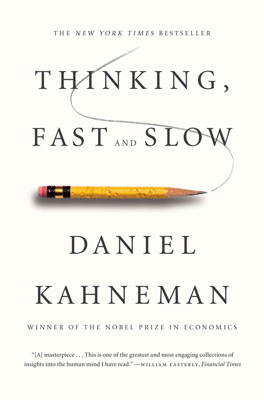Attention and Effort
System 2 and Mental Effort
Characteristics of System 2: System 2 is defined by effortful operations and a tendency towards laziness, trying to avoid more effort than necessary. Most decisions are influenced by the automatic System 1, but true self-control and complex tasks requiring attention and effort are domains solely managed by System 2.
Mental Effort and Pupil Dilation: Mental effort can be observed physically through pupil dilation. The more demanding the cognitive task, the more the pupil dilates. This was first studied in depth by psychologists Eckhard Hess and later by Kahneman and his collaborator, using tasks like the "Add-1" and "Add-3" which are rapid numerical transformation exercises. These tasks can physically and mentally strain an individual to the limits of their cognitive abilities.
Task Complexity and Cognitive Load: Cognitive tasks vary in their demand on System 2. Simple tasks (like counting or simple reading) demand less effort and cause minimal pupil dilation compared to complex tasks (like the Add-3 task or mental multiplication), which involve keeping multiple pieces of information active in the working memory. The latter types of tasks can engender rapid pupil dilation and increased heart rate, illustrating the intense mental effort involved.
Task Sets and Executive Control: System 2 can adopt specific "task sets" to manage complex tasks and override habitual responses. This is seen in activities like counting specific letters amidst a stream of text, indicating that System 2 can direct attention selectively despite distractions or competing tasks. Switching between different task sets is effortful and becomes increasingly challenging under time pressure.
Efficiency in Attention Control: Efficiency in controlling attention not only reflects intelligence but is crucial in professions requiring high levels of focus and decision-making under pressure, such as air traffic control or military operations. These scenarios demand rapid task switching and high cognitive load management, functionalities provided by System 2.
Implications of Effortful Thinking: Continuous or intense utilization of System 2 can lead to cognitive fatigue, given its effortful nature. People generally prefer to operate under the "law of least effort," choosing easier paths or breaking tasks down into simpler, manageable steps to avoid mental overload.
Real-Life Applications and Observations
- Attention and Effort in Daily Life: The chapter illustrates how understanding the dynamics of attention and mental effort can explain everyday behaviors and decisions, such as choosing not to engage in complex problem-solving while driving or missing details when focused on a demanding task.
In summary, this chapter delves into the attributes and demands of System 2, emphasizing its role in managing complex and effortful cognitive tasks, the physical manifestations of mental effort, and the practical implications of these processes in everyday life and specialized professions.
